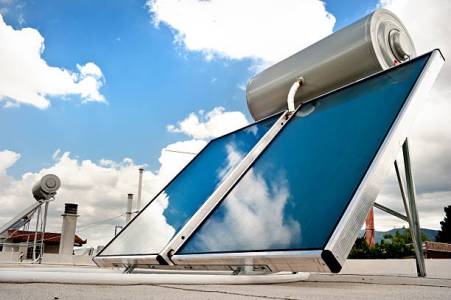Description
Grid-Tied Solar Systems: Power Your Home with the Sun
Harness the power of the sun and significantly reduce your electricity bills with a grid-tied solar system. This advanced technology seamlessly integrates your solar panels with your existing utility grid, providing a clean, reliable, and cost-effective energy solution for your home or business.
How it Works:
Grid-tied solar systems utilize photovoltaic (PV) panels to convert sunlight into direct current (DC) electricity. This DC electricity is then converted into alternating current (AC) electricity by an inverter, which is compatible with your home's electrical system. Excess energy generated by your solar panels is fed back into the grid, potentially earning you credits through net metering programs offered by your utility company. When your solar panels aren't producing enough energy (e.g., at night or during cloudy weather), you automatically draw power from the grid.
Key Benefits:
- Reduced Electricity Bills: Significantly lower your monthly energy costs by generating your own clean energy.
- Environmental Friendliness: Reduce your carbon footprint and contribute to a greener future by utilizing renewable energy.
- Increased Home Value: Solar panels are a highly desirable feature that can increase the resale value of your property.
- Low Maintenance: Solar panels require minimal maintenance, typically just periodic cleaning.
- Scalability: Systems can be designed to meet your current energy needs and easily expanded as your requirements change.
- Net Metering Potential: Earn credits from your utility company for excess energy fed back into the grid.
- Quiet Operation: Grid-tied systems operate silently, unlike noisy generators.
System Components:
- Solar Panels: High-efficiency photovoltaic panels convert sunlight into DC electricity. Various panel types and sizes are available to optimize performance based on your roof space and energy needs.
- Inverter: Converts the DC electricity from the panels into AC electricity compatible with your home's electrical system. Inverters come in various types, including string inverters and microinverters, each with its own advantages.
- Mounting System: Securely attaches the solar panels to your roof. Various mounting options are available depending on your roof type and orientation.
- Monitoring System: Allows you to track your solar energy production and consumption, providing valuable insights into your system's performance. Many systems offer real-time data via a mobile app or online portal.
- Wiring and Connectors: Connects all system components and ensures safe and efficient energy transfer.
Choosing the Right System:
The size and configuration of your grid-tied solar system will depend on several factors, including:
- Your energy consumption: An energy audit will help determine the size of the system needed to meet your needs.
- Your roof space and orientation: The amount of available sunlight will influence the system's output.
- Your budget: Various financing options are available to make solar power more affordable.
- Local regulations and incentives: Check for available rebates, tax credits, and net metering programs in your area.
Contact us today for a free consultation and customized quote! We'll assess your energy needs, design a system tailored to your home, and guide you through the entire process from installation to ongoing maintenance. Let us help you embrace clean energy and start saving money today!
